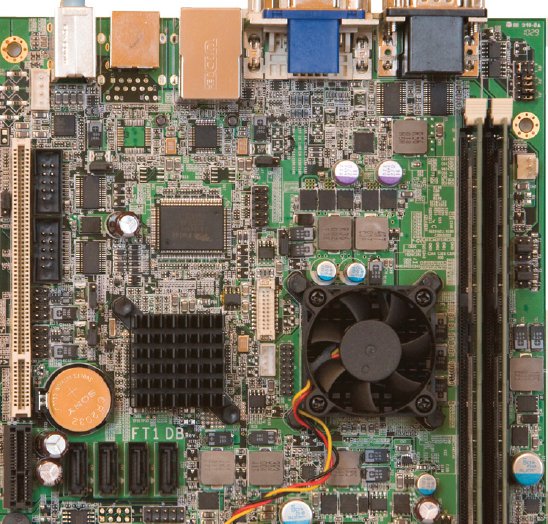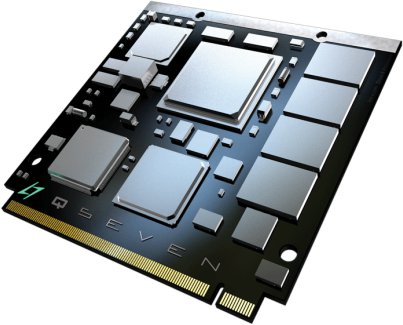Earlier this year, AMD announced its new Embedded processors G-Series aimed at set-top boxes, smart tv, digital signage, point of sales, media servers and more in order to compete with Intel Atom solutions as well as ARM based processors. Please refer to the link above for an overview and details about the 5 processors of the AMD G-series: T56N – Dual core @ 1.6GHz with Radeon HD 6310 GPU T48N – Dual core @ 1.4 GHz with Radeon HD 6310 GPU T40N – Dual core @ 1.0 GHz with Radeon HD 6250 GPU T52R – Single core @ 1.5 GHz with Radeon HD 6310 GPU Today, I’ll discuss about the development boards and software development kits available for this platform. AMD G-Series Development Boards and Reference Designs AMD Provide two reference designs and one development board: AMD Embedded G-Series Platform Mini-ITX Reference Design. No details are publicly available as this […]
Netgem’s IPTV 2.0 Home Cloud SDK
Netgem announced the release of its “Home Cloud” SDK based on IPTV 2.0 open architecture. Here’s an excerpt from the press release: Paris, France March 15 , 2011 Netgem, an IPTV technology leader, has announced it has made its Home Cloud software development kit (SDK) available to application developers, Internet service providers and operator partners. Netgem is further developing its partner ecosystem to enable third parties to take advantage of its IPTV 2.0 open architecture. This application framework is designed for the development of live and on-demand TV and multimedia applications. Using the open and fully documented APIs telecom operators and their partners can develop their local ecosystem of applications and services to differentiate their offering from competitors. Since Netgem is a pure technology vendor it does not interfere with the economics of the relationship between operators and developers, who are able to share 100% of the revenue. The full […]
Qemu Linaro Versatile Express Image on Ubuntu 10.10
I’ve installed qemu-linaro and run an ARM image based on the instructions on https://wiki.linaro.org/PeterMaydell/QemuVersatileExpress. I used Ubuntu 10.10 desktop edition. First, install the Linaro images tools: sudo apt-get install linaro-image-tools Download the Linaro release and versatile hardware pack: wget http://releases.linaro.org/platform/linaro-n/nano/alpha-3/linaro-natty-nano-tar-20110302-0.tar.gz wget http://releases.linaro.org/platform/linaro-n/hwpacks/alpha-3/hwpack_linaro-vexpress_20110302-0_armel_supported.tar.gz You can download another hwpack for omap3, i.mx51, pandaboard, beagleboard, ST U8500, etc.. if needed at http://releases.linaro.org/platform/linaro-n/hwpacks/alpha-3/ Download the source, extract it, then configure, build and install qemu linaro: wget http://launchpad.net/qemu-linaro/trunk/2011.03-1/+download/qemu-linaro-0.14.50-2011.03-1.tar.gz tar xzvf qemu-linaro-0.14.50-2011.03-1.tar.gz cd qemu-linaro-0.14.50-2011.03-1 ./configure –prefix=/usr make sudo make install Make sure the prefix is set to /usr in order to overwrite any previous version of Qemu (It installed qemu linaro in /usr/local/ instead in my case). Failure to do so may generate the following error during linaro-media-create: qemu: fatal: cp15 insn ee1d6f70 Instead of compiling qemu, you can install qemu-linaro with apt-get (this will avoid possible version issues between linaro-media-create and qemu): sudo add-apt-repository ppa:linaro-maintainers/tools […]
QSeven Form Factor Embedded Boards by Seco
QSeven is a new standard (QSeven Specifications 1.20) that provides pinout, electromechanical description and implementation guidelines so that the main boards (with the MPU) be easily exchanged. So that you can a larger board with all connectors and a QSeven boards based on Intel icore, Atom or other processors based on ARM that simply fits into that larger board. The QSeven concept is defined as follows: Qseven Concept The Qseven concept is an off-the-shelf, multi vendor, Single-Board-Computer that integrates all the core components of a common PC and is mounted onto an application specific carrier board. Qseven modules have a standardized form factor of 70mm x 70mm and have specified pinouts based on the high speed MXM system connector that has a standardized pinout regardless of the vendor. The Qseven module provides the functional requirements for an embedded application. These functions include, but are not limited to, graphics, sound, mass […]
Video Wall with Beagleboards and ffmpeg
There was a 6-Screen Video Wall at Embedded World 2011, powered by 6 Beagleboard xM (based on Texas Instruments OMAP 3 running @ 1Ghz – Cost: 149 USD / piece), connected vi Ethernet. In the video they explain that the system is running Linux Ångström and the video is played and synchronized over Ethernet with ffmpeg. After doing some research on how to do this, they are probably using omapfbplay with netsync enabled which you can compile as follows: NETSYNC=y OMAPFB=y make However, if you are using Linux Ångström, omapfbplay with netsync is enabled by default. This can also be done with the first version of Beagleboard (without Ethernet) via USB. They can also control each display independently and synchronize the mouse and keyboard thanks to Synergy. Jean-Luc Aufranc (CNXSoft)Jean-Luc started CNX Software in 2010 as a part-time endeavor, before quitting his job as a software engineering manager, and starting […]
Tablet Reference Design based on Samsung Exymos 4210
HardKernel, a Korean company, announced the ODROID-A, a tablet reference design based on Samsung Exymos 4210 (codename Orion), dual-core ARM Cortex-A9, Mali-400 GPU, 1GB Low Power DDR2, 10.1 inch 1366 x 768 TFT with capacitive multi-touch, Dual Camera, HSPA evolution, 9-axis sensor and running Android 2.3 Gingerbread. They will update it to Android 3.0 later on. This development kit will be available at the end of March 2011 for 749 USD (800,000 Won) for developers only. This should offer similar performance as the Motorola Xoom (except 3D maybe), and cost less which is a bit surprising for a development platform. They have an online community to support development on this hardware and they’ll provide the full source code and schematics free of charge. ODROID-A Specifications: Processor Samsung Exynos4210 Cortex-A9 Dualcore 1Ghz with 1MB L2 cache Memory 1024MB LP DDR2 800Mega data rate 3D Accelerator Mali-400 MP Core Micro-Sd slot 8GB […]
Cypress Semiconductors PSoC Development Kits
Cypress Semiconductors was at Embedded World 2011 exhibiting their PSoC 5 development kits based on ARM Cortex M3 and analog & digital programmable modules. They had different development boards and demos based on PSoC 5: A simple board with PSoC 5, capacitive sensing, radio and accelerometer where they lit up a LED when the board moves (CY8CKIT-014 kit – see below for details). A similar board with a dot-matrix LCD and a potentiometer, where they display the voltage at the Analog input on the LCD. (CY8KIT-010 kit – see below for details). A full development kit with PSoC 5, PSoC 3 and PSoc 5. (CY8KIT-001 kit – see below for details). Several demo of multi-touch and motion sensors capabilities etc.. The development kits are already available (engineering samples), but PSoC 5 will only be mass-produced in Q3 2011 since they are currently qualifying the chip. You can see the development […]
Telechips 8803 based Android Tablet
Mobile Tech, a Hong Kong based company, showcased two Android tablets (8″ and 10″) based on the new Telechips 8803 processor (ARM Cortex A8) running at 1.2GHz that supposedly offers better performance than the first Galaxy Tab. Both devices use an Innolux capacitive touchscreen, the 8″ version has a resolution of 800×600 and the 10″ 1024×768, both have 512MB RAM and 4GB Flash memory, HDMI output, 802.11n Wifi and optionally 3G and a 1.3MP front camera. They plan to support Android 2.3 (Gingerbread) with this version of the hardware for the time being. Honeycomb will need more RAM (at least 1GB) and more time for the porting with Telechips TCC8803. They only expect Android 3.0 to be ready by the end of the year on that platform. The 8″ version is already in mass production, their price target is 300 Euros retail. The 10″ version should be ready in May […]






